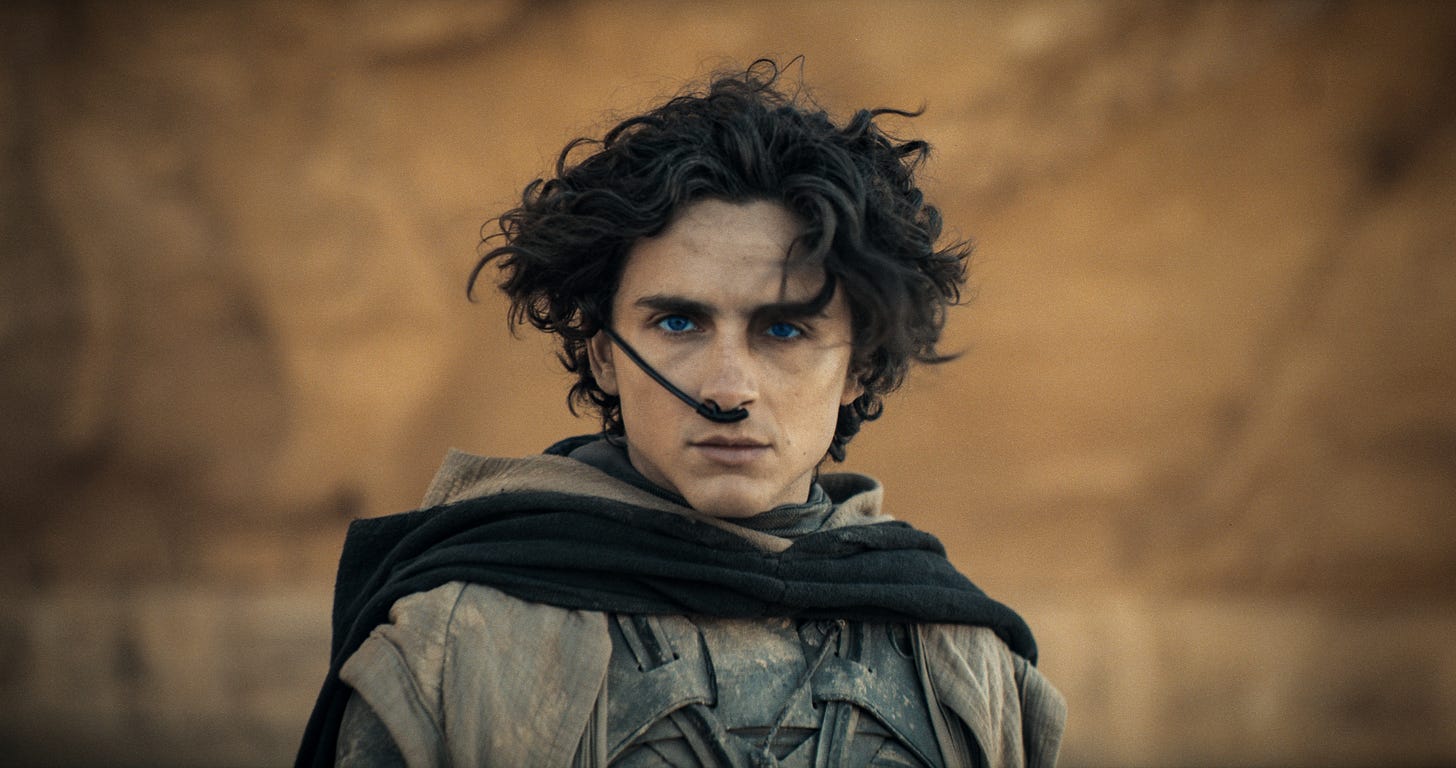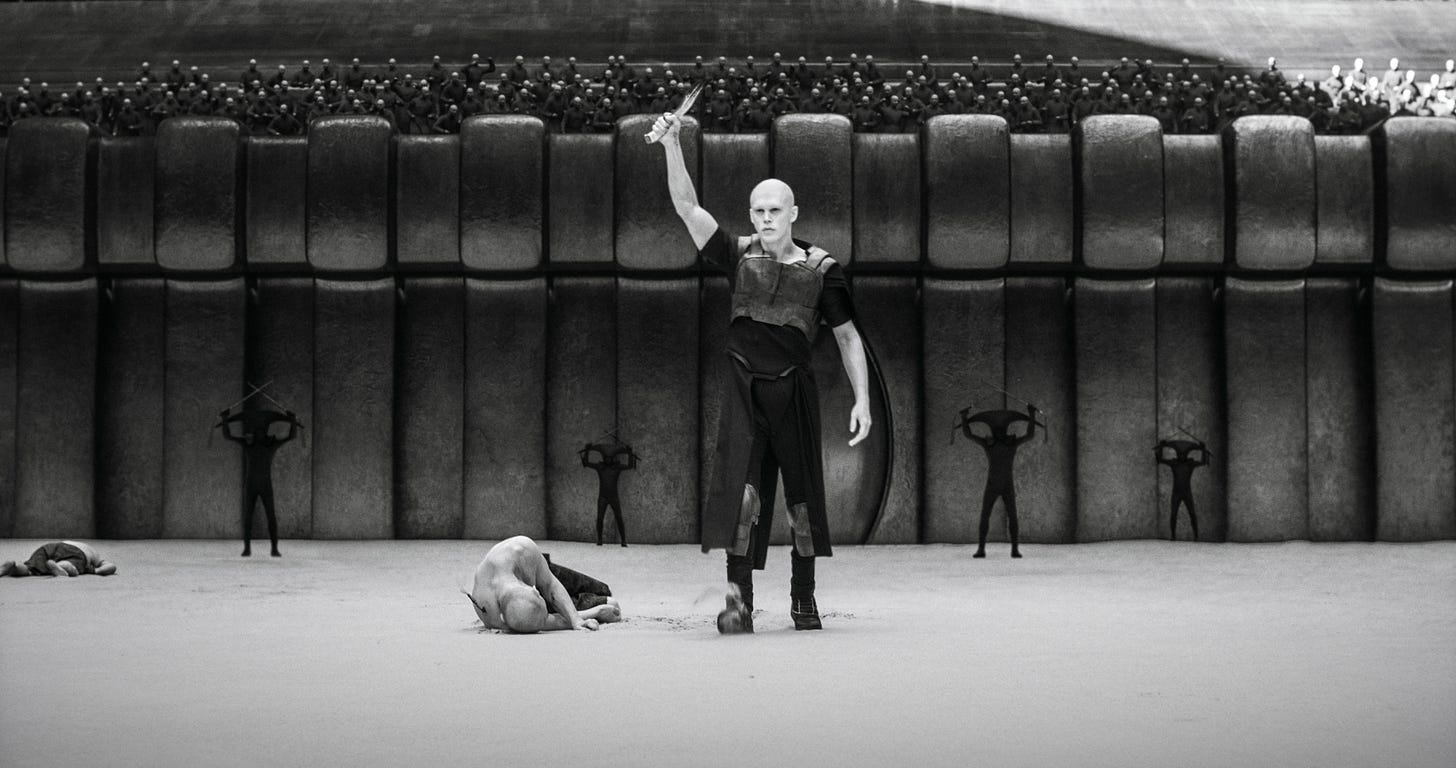'Dune: Part Two' is a nearly complete triumph
Frank Herbert's "unfilmable" saga has officially been cracked, with a second installment that's bigger, and better, than the first
For decades, it was treated as something of a given that Frank Herbert’s Dune novels were probably unadaptable, at least in a way that would result in a great movie. Top-notch directors had attempted to adapt Dune, and either never made the film at all (Alejandro Jodorowsky) or made a version that’s probably his least respected movie (David Lynch.)
Now, with the arrival of Dune: Part Two, once again from director Denis Villeneuve, there have been two fantastic Dune movies in four years.
The new Dune movie, out next week, is a towering achievement, and better than the previous entry.
The film is just big in every way- with a loud, loud score from Hans Zimmer and some massive action setpieces. Even the sandworms are huge (although there are small ones too!) I recommend as highly as possible seeing this film in IMAX, Dolby, or another large format- and also giving the first one a rewatch before you go (it’s on both Netflix and Max.)
Dune is a notoriously complex story, with a huge number of characters and massive amounts of exposition and lore, and my biggest fear going into the 2021 film was that, as a non-reader of Herbert’s books, I wouldn’t be able to follow it. But the second film manages to keep the storytelling relatively straight and find a human element within all the dense mythology.
As with the entire Dune saga, the new film is mostly set on the desert planet of Arrakis where, in the first film, the galaxy’s colonial power has placed House Atreides in charge of the resource-rich planet, displacing the long-ruling Harkonnen dynasty. But as revealed in the first film, it’s all part of a plot by the emperor to destroy the Atreides family. By the end of the first film, they have mostly been wiped out, except for young messiah figure Paul (Timothée Chalamet), and his mother Lady Jessica (Rebecca Ferguson), a powerful figure of the religious order known as Bene Gesserit.
I know this all sounds very dense, as well as nonsensical if you don’t know the backstory. And that’s just the first movie. But credit is due to Villeneuve and his co-writer, Jon Spaihts, for telling the story in a way that is easy to follow, not to mention exciting.
As the second movie begins, Paul and Lady Jessica have aligned with the planet’s indigenous people, known as the Fremen, who include the warrior (and Paul’s love interest) Chani, played by Zendaya.
The film largely focuses on battles, with the Atreides/Fremen alliance on one side and the Harkonnens on the other. Memorable new characters include Christopher Walken as the emperor, Florence Pugh as his daughter Princess Irulan, and Austin Butler as Feyd-Rautha, a completely hairless Harkonnen scion.
There’s also a lot there about the question of whether Paul is a messiah, and what that means. And Chalamet plays it all very well, especially in the third act when he’s essentially playing a different character.
The sandworms are back, and better than ever, and now they’ve inspired the world’s most controversial movie theater accessory. And due to a certain property of the worms, the second movie in three months to both star Chalamet and have a plot point that reminded me of the “Fry and the Slurm Factory” episode of Futurama.
Much has been written about whether Dune is a “white savior” narrative, and if your knowledge of the saga amounts only to the Lynch movie from the 1980s, you might conclude that. But the later books, I gather, are quite a bit more complex than that, something very similar to the discourse that emerged mid-series on Game of Thrones.
Every indication is we’re going to see that complexity play out in the third film. In the third act of Part Two, things certainly take a turn indicating that that is what’s coming.
Meanwhile, there are real-life allegories everywhere, to Islam, to colonialism, to the Middle East, and numerous other things. The Nazi symbolism of the Harkonnens is even less subtle than in the first film, including a long sequence that’s heavily inspired by the 1936 Berlin Olympics and Leni Riefenstahl’s cinematic depiction of them.
The Dune movies are likely to end up as a trilogy, even though they weren’t planned that way, and the first was made without any guarantee of a second. Dune Part II, though, feels an awful lot like The Empire Strikes Back (and also, it must be said, like The Last Jedi.) All three are second parts of trilogies that very much feel like that, even if they’re great on their own.
The current series of Dune films, while successful, has fallen victim to a lot of unfortunate circumstances. First COVID, and then the strikes, caused long delays in the planned releases of both of them. But both have been more than worth the wait, and I say this as someone who was never all that enamored with most of Denis Villeneuve’s work.




